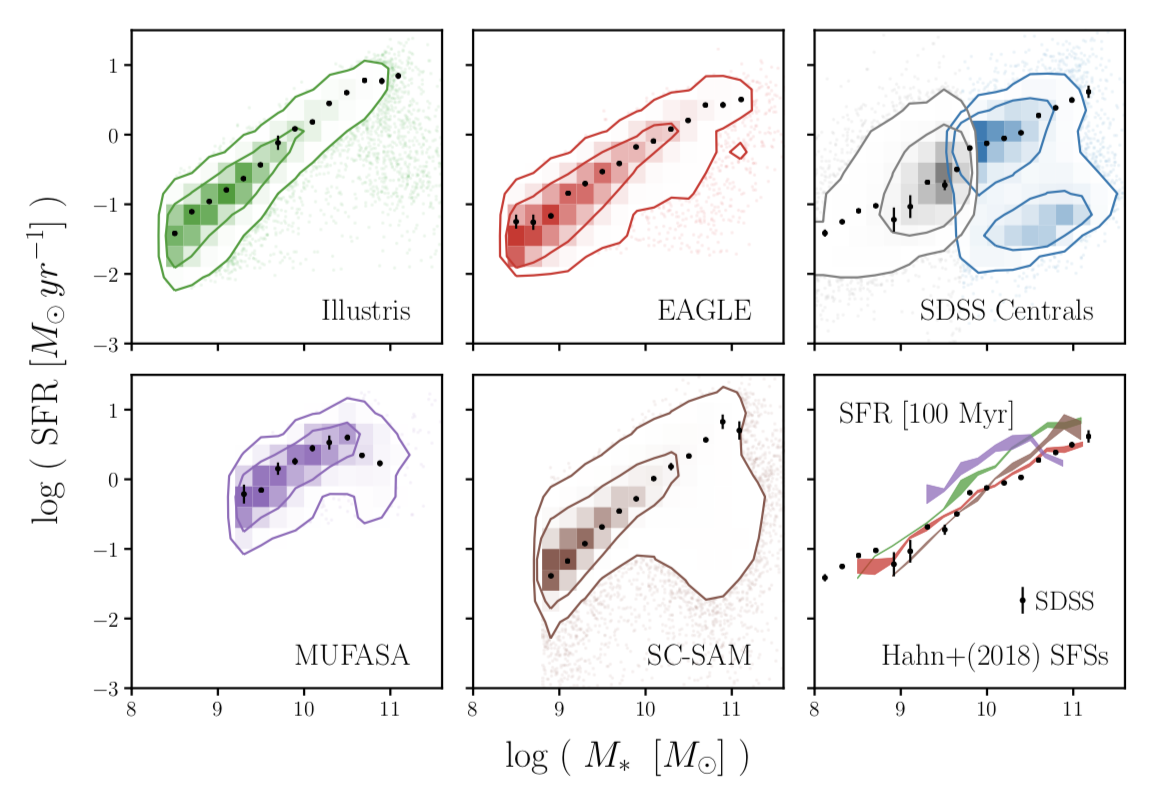
ChangHoon Hahn
Galaxy Evolution
Galaxies broadly fall into two categories: star-forming and quiescent. Over cosmic time significant fractions of star-forming galaxies rapidly "quench" their star formation and become quiescent [1412.7162]. State-of-the-art galaxy formation models (hydro sims, semi-analytic models, and empirical models) reproduce global distributions and scaling relations of galaxies in observations. However, comparisons of scaling relations using inconsistently measured galaxy properties are insufficient for shedding further light on the physical processes that drive galaxy evolution.
As part of the IQ collaboratory, I am leading an effort to test galaxy formation models and shed light on star formation quenching in galaxies by conducting an apples-to-apples comparison of simulated and observed galaxy populations. Even among the models, I found nearly an order of magnitude difference among their stellar mass-star formation rate relations [1809.01665]. When we compared them to observations, we found that even hydrodynamical simulations (the "gold standard") cannot reproduce the absence of quiescent isolated low mass galaxies in observations because their prescription for stellar feedback is too efficient in dwarf galaxies [2010.01132]. Most recently in [2106.09741], I used comparisons of simulations to observations to constrain the dust content of galaxies.

Another approach to shedding light on galaxy evolution is through empirical models built from combining the precise predictions of structure formation from cosmology with the empirical relations of galaxy populations. Empirical models are computationally efficient, so they can be used for parameter exploration and compared to observations using simulation-based inference to constrain specific physical processes. Using this approach, I've constrained the timescale of star formation quenching in central galaxies [1609.04398], demonstrated that large-scale "galactic conformity" is driven by contamination [1702.01121], and measured the strength of assembly bias [1705.08458, 1610.01991]. Most recently, I used empirical models to constrain the timescale of star formation variability [1910.01644]. With upcoming observations (e.g.DESI, PFS, JWST, Rubin, and Roman), we'll be able to extend these comparisons to new galaxy populations and constrain galaxy evolution with unprecedented precision.